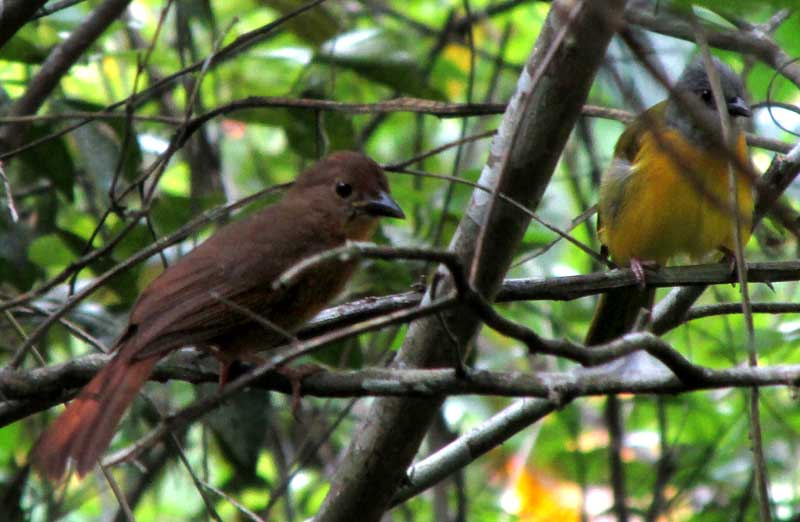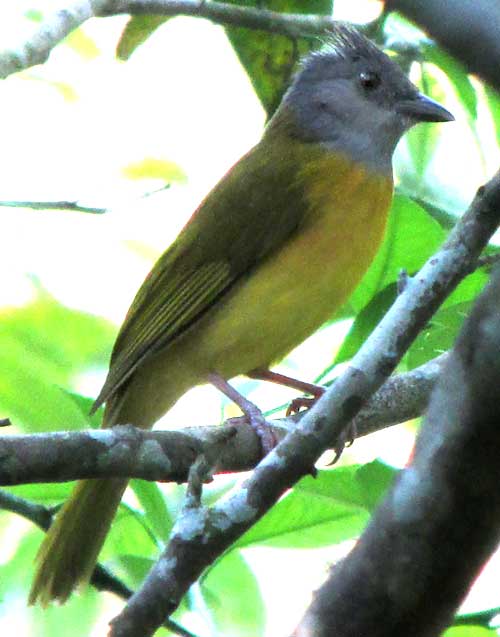Excerpts from Jim Conrad's
Naturalist Newsletter
from the May 15, 2016 Newsletter with notes from a visit in mid April to Lacanja Chansayab in the Lacandon Reserve; elevation 200m (650ft), N16.604°, W90.917°; Chiapas, MÉXICO
GRAY-HEADED TANAGER
In late afternoon on a hot, humid April 14th, when I was in the Lacandon community of Lacanja Chansayab in Chiapas's Lacandon Reserve in extreme southeastern Mexico, two birds silently and keeping to the shadows worked their way through dense cover to near my tent, where they perched less than a meter off the ground (3ft). For several minutes they watched me watching them, as shown below:

With the large, black bill and a fairly distinct eye ring, the bird on the left looks like a female Red-throated Ant-Tanager. The one on the right, however, with an all-gray head, yellow chest, and bushy crest is a Gray-headed Tanager, EUCOMETIS PENICILLATA. Among Gray-headed Tanagers the sexes are similar. After the picture was taken the ant-tanager sneaked away, but the Gray-headed Tanager was nice enough to turn sideways and provide a better view -- though in such deep shadows that I had to overexpose the background to bring out the bird's colors -- shown below:

Red-throated Ant-Tanagers extend as far north as the central Yucatan, but Gray-headed Tanagers need lusher, taller forest than we have in the central Yucatan. Therefore, here was a bird I don't normally see in the Yucatan, and that was a treat.
Gray-headed Tanagers are distributed from southern Mexico, including the southeastern Yucatan Peninsula, south through Central America to Brazil in South America. They don't like open, disturbed places, so their habitat is disappearing. Within the forest they tend to keep low to the ground, just as ours was doing, and they're known to attend ant swarms. As army ants surge across the forest floor looking for prey, small insects and other invertebrates bolt from concealment, trying to escape the ants, but Gray-headed Tanagers are watching, and might catch them. Red-throated Ant-Tanagers also follow ant swarms and also typically stay close to the forest floor, so the two birds of different species in our little "mixed flock" probably knew one another very well, and might regularly find themselves sharing a perch.
In the American tropics the tanagers form a large, colorful group. In Chiapas, 15 tanager species can be looked for. That number includes migrants and winter visitors, such as the north's Scarlet and Summer Tanagers.